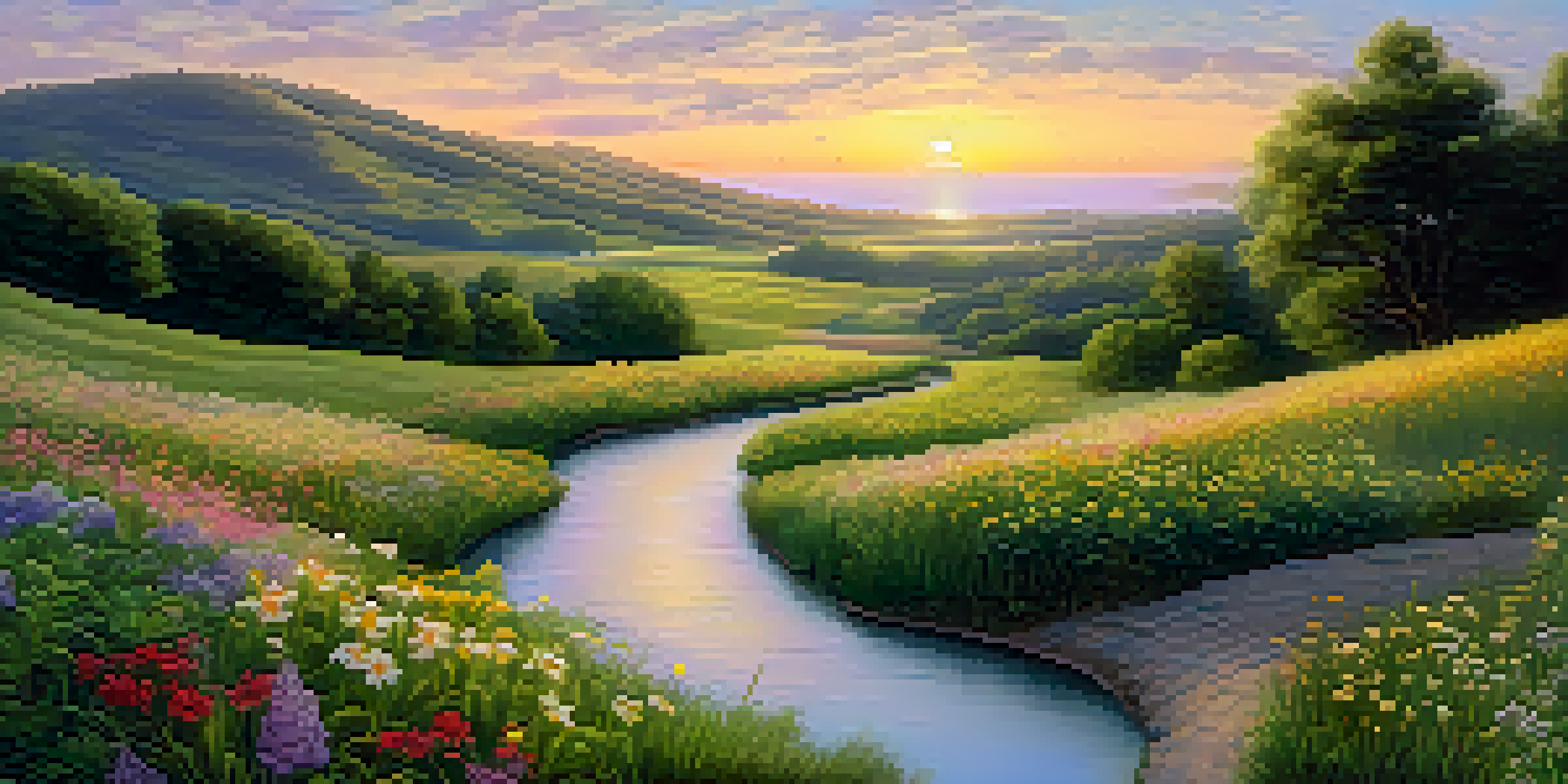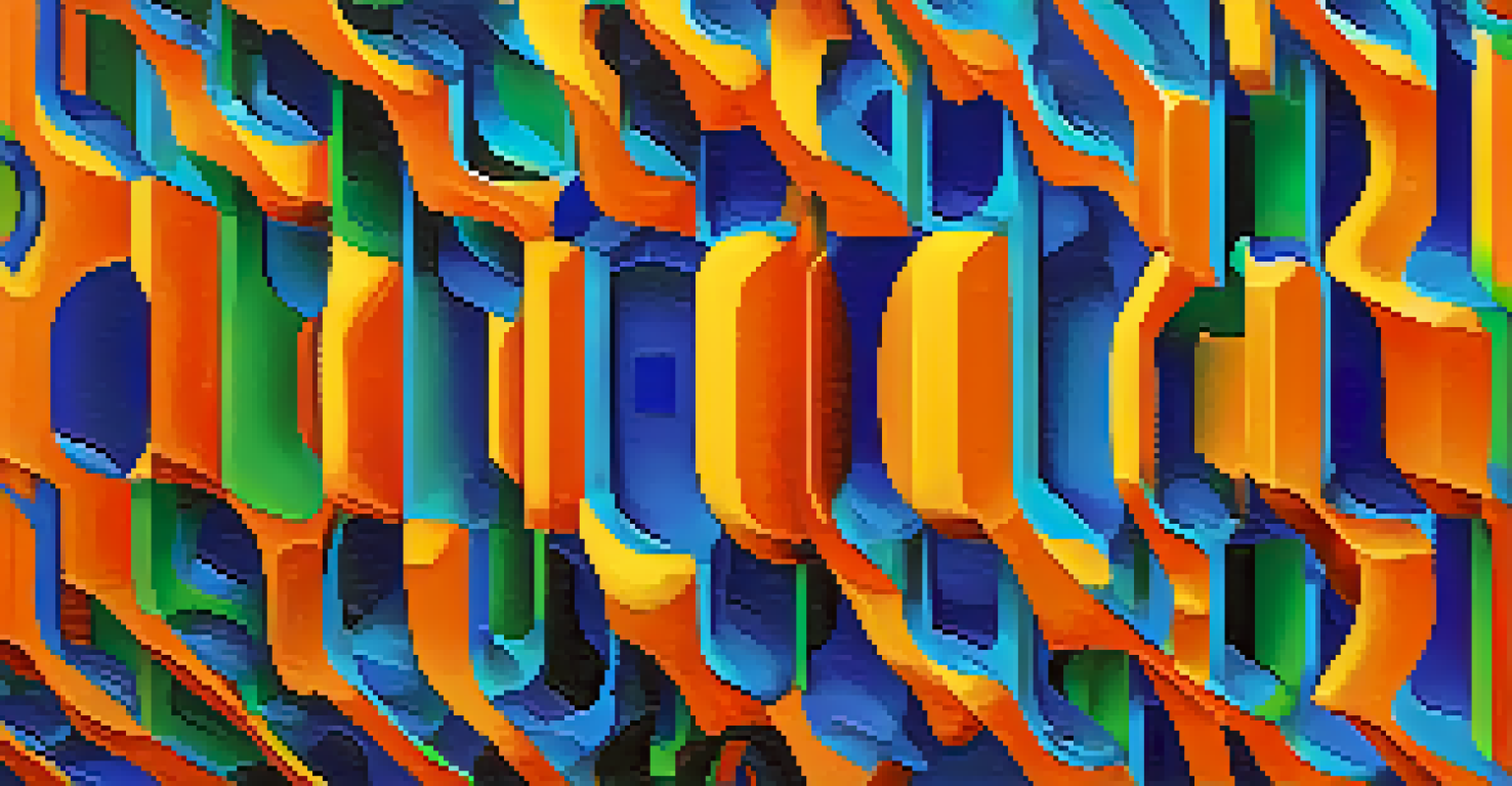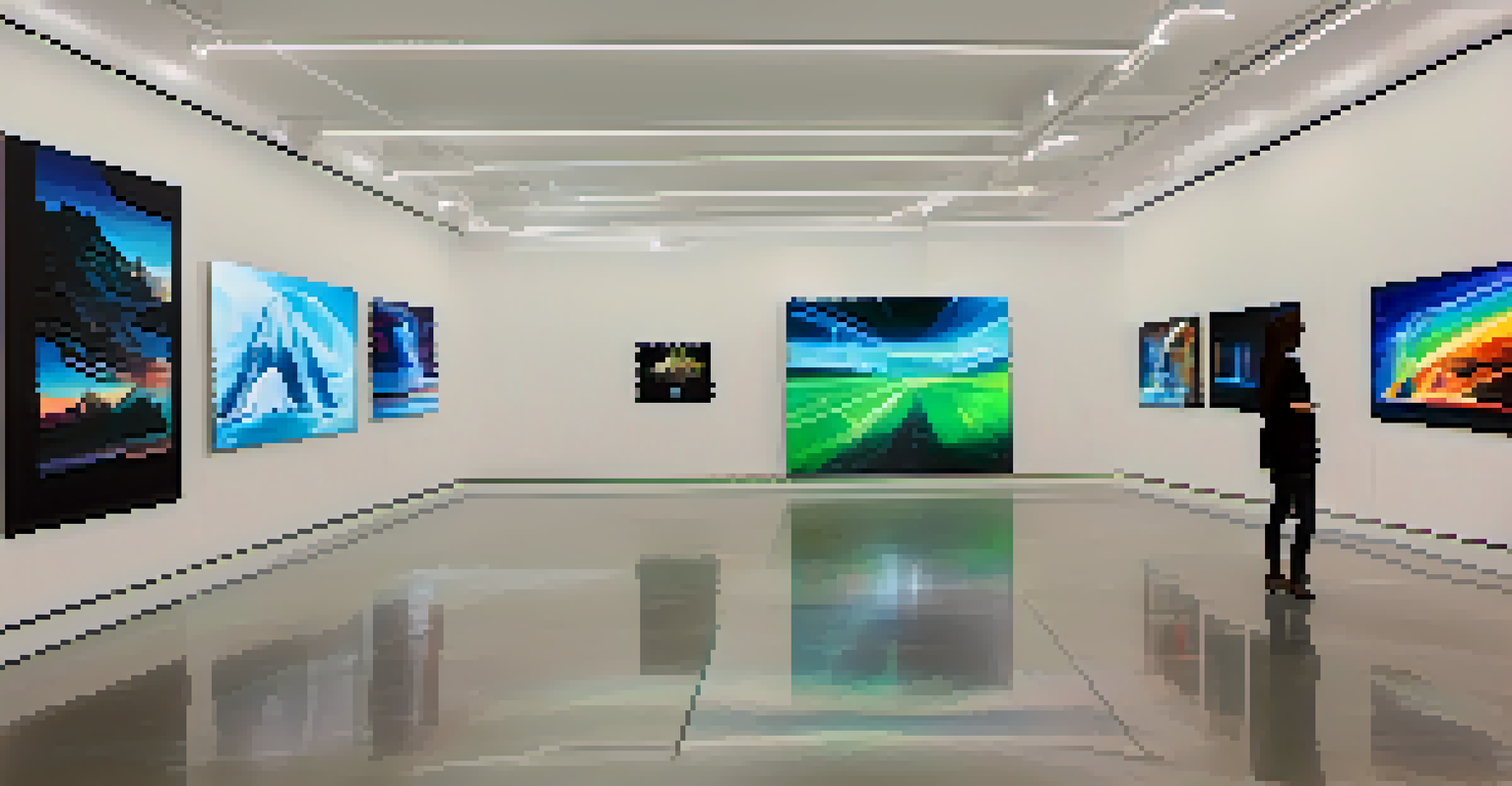Art and Algorithms: The Mathematical Foundations of Creativity

The Intersection of Art and Mathematics: An Overview
Art and mathematics may seem worlds apart, but they share a fascinating relationship. Both disciplines rely on structure and form, making them complementary in numerous ways. For instance, the golden ratio, a mathematical concept, has long been used by artists to create aesthetically pleasing compositions, from the Parthenon to modern design.
Mathematics is the language in which God has written the universe.
As we delve deeper, we find that mathematical principles can enhance artistic practices, enabling creators to explore new dimensions of expression. Artists like M.C. Escher have famously employed mathematical concepts to produce visually stunning works that challenge our perceptions. This intersection invites us to rethink the boundaries between creativity and computation.
Ultimately, recognizing the synergy between art and mathematics opens up exciting possibilities for innovation. By embracing algorithms, artists can create works that are not only visually captivating but also rooted in mathematical elegance. This exploration sets the stage for a deeper understanding of how algorithms influence creativity in the digital age.
Understanding Algorithms: The Language of Creativity
At its core, an algorithm is a set of instructions or rules designed to solve a problem or perform a task. In the realm of art, algorithms can dictate everything from the arrangement of colors to the structure of a painting. This systematic approach allows artists to generate unique works that blend creativity with precision, showcasing the power of mathematical thinking.

For instance, generative art leverages algorithms to create dynamic and evolving visuals. Artists can design code that produces unexpected results, leading to artworks that are never quite the same each time they're displayed. This element of surprise adds an engaging layer to the artistic process, inviting viewers to experience art in a new light.
Art and Math: A Creative Partnership
The intersection of art and mathematics reveals a synergy that enhances creativity through principles like the golden ratio and algorithms.
By understanding algorithms, artists gain a tool to explore their creativity more deeply. They can manipulate variables, experiment with form and structure, and ultimately push the boundaries of traditional artistic practices. This marriage of creativity and computation fosters a rich dialogue between the two fields, inspiring innovative approaches to art-making.
Generative Art: When Algorithms Become Artists
Generative art is a captivating genre that relies heavily on algorithms to produce artwork. Artists write code that autonomously creates compositions, often incorporating randomness and variability to ensure each piece is unique. This process blurs the line between creator and creation, inviting discussions about authorship and originality in the art world.
Art is the most beautiful of all lies.
One significant figure in generative art is Casey Reas, one of the co-founders of Processing, a programming language designed for visual arts. His work exemplifies how algorithms can generate complex visual patterns that captivate audiences. By harnessing the capabilities of technology, generative artists challenge our perceptions of what it means to be an artist.
As we embrace generative art, we also confront new questions about the role of human intuition and emotion in the creative process. While algorithms can create stunning visuals, they lack the depth of human experience. This interplay between machine-generated art and human creativity enriches the conversation around art's future in an increasingly digital landscape.
The Role of Data in Artistic Expression
Data has become a vital resource for artists, providing new insights and inspiration. By analyzing patterns and trends, artists can create works that respond to real-world phenomena, from social issues to environmental changes. This data-driven approach fosters a deeper connection between art and society, engaging viewers on multiple levels.
For example, artists like Ryoji Ikeda transform raw data into immersive audio-visual installations. By visualizing complex datasets, they invite audiences to reflect on the information that shapes our lives. This intersection of art and data emphasizes the importance of context and meaning in artistic expression.
Generative Art Redefines Authorship
Generative art challenges traditional notions of authorship as algorithms autonomously create unique artworks, sparking discussions about creativity.
Incorporating data into art not only enhances creativity but also encourages critical thinking. It challenges both artists and viewers to consider the implications of the information presented. As artists continue to explore data as a medium, we can expect to see innovative works that provoke thought and inspire action.
AI in Art: A New Frontier of Creativity
Artificial Intelligence (AI) has emerged as a powerful tool in the artistic landscape, transforming how we create and perceive art. AI algorithms can analyze vast datasets of existing artworks, learning styles and techniques to generate new pieces that mimic or innovate upon traditional forms. This technology opens up exciting opportunities for collaboration between human artists and machines.
Artists like Mario Klingemann are at the forefront of this movement, using AI to explore themes of identity and perception. By programming neural networks, Klingemann creates artworks that challenge our understanding of creativity and authorship. This collaboration raises questions about what it means to be an artist in an age where machines can also produce art.
While AI may enhance the creative process, it also invites debate regarding the authenticity of machine-generated art. Can a piece created by an algorithm possess the same emotional depth as one made by a human? As we navigate this new frontier, it's essential to consider both the potential and limitations of AI in shaping the future of artistic expression.
The Emotional Impact of Algorithmic Art
Despite the mathematical foundations of algorithmic art, it can evoke profound emotional responses. The interplay of colors, shapes, and patterns generated through algorithms can resonate with viewers in unexpected ways. This emotional connection challenges the notion that art must be purely human-crafted to be impactful.
Take, for instance, the works of artist Refik Anadol, who uses AI to create mesmerizing installations that immerse audiences in a sensory experience. His projects often blend digital data with visual elements, resulting in a powerful emotional resonance. Viewers find themselves drawn into the artwork, feeling a connection that transcends traditional artistic boundaries.
AI: Transforming Artistic Expression
Artificial Intelligence is revolutionizing the art world by enabling collaborations between human artists and machines, raising questions about creativity and authenticity.
The emotional impact of algorithmic art highlights the importance of viewer interpretation. Each person brings their own experiences and emotions to the artwork, allowing for a diverse range of reactions. This democratization of art encourages a deeper engagement, as audiences become active participants in the creative process.
Future Trends: The Evolution of Art and Algorithms
As technology continues to evolve, the relationship between art and algorithms is set to deepen. We can expect to see more artists embracing digital tools and AI to push the boundaries of creativity. This evolution promises to challenge our perceptions of art and redefine what it means to be an artist in the 21st century.
Emerging technologies such as virtual reality (VR) and augmented reality (AR) are already reshaping the artistic landscape. Artists can create immersive experiences that transport viewers into new worlds, blurring the lines between reality and imagination. This evolution opens up exciting opportunities for storytelling and interaction, enhancing the viewer's experience.

Looking ahead, the future of art and algorithms is bright and full of possibilities. As artists continue to explore these intersections, we can anticipate a vibrant tapestry of creative expression that embraces innovation. The journey into this new era invites all of us to participate in the ongoing dialogue about art, technology, and the human experience.